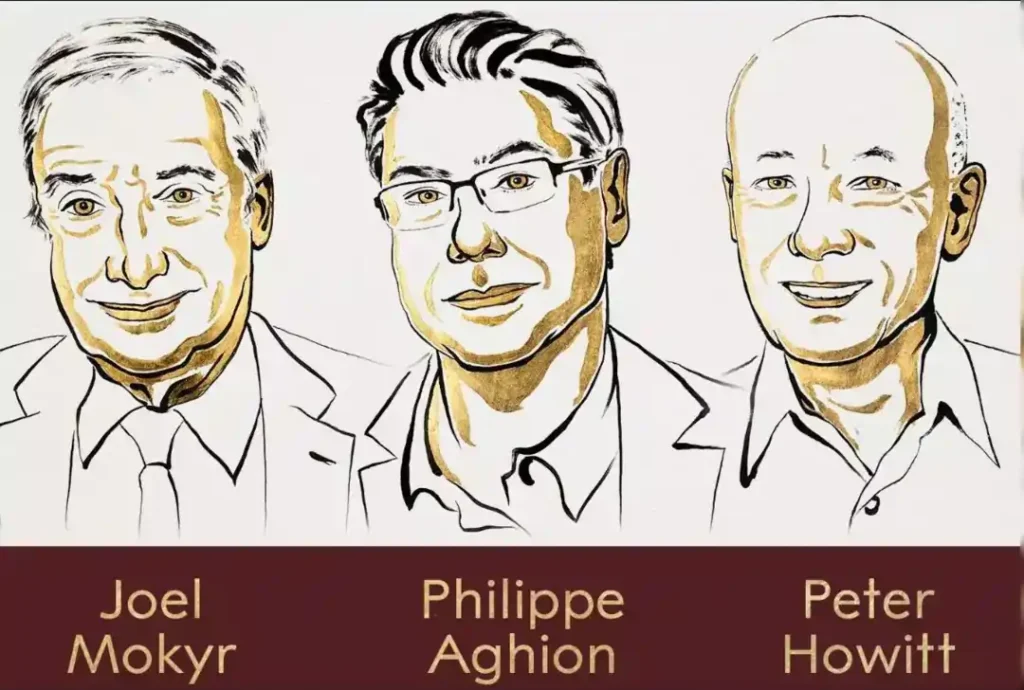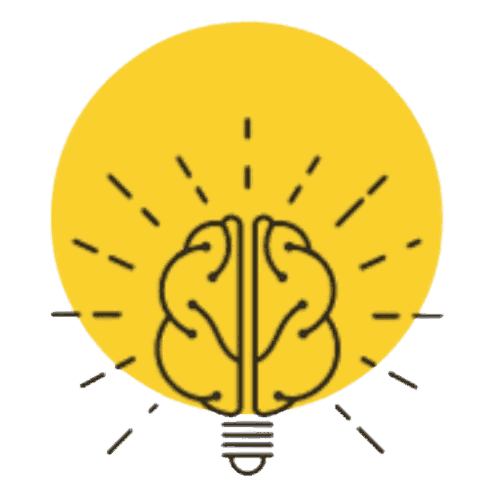New Delhi: In a groundbreaking announcement that underscores the pivotal role of innovation in modern economies, the 2025 Nobel Prize in Economic Sciences has been bestowed upon three distinguished scholars: Joel Mokyr, Philippe Aghion, and Peter Howitt. Their pioneering research delves into the engines of innovation-driven economic growth, shedding light on why the world has experienced unprecedented prosperity over the last two centuries. This award, officially titled the Sveriges Riksbank Prize in Economic Sciences in Memory of Alfred Nobel, highlights the transformative power of technological progress and creative destruction in reshaping global wealth patterns.
Announced on October 13, 2025, by the Royal Swedish Academy of Sciences in Stockholm, Sweden, the prize recognizes the trio “for explaining innovation-driven economic growth.” Joel Mokyr, an economic historian from Northwestern University in the United States, receives one half of the award “for identifying the prerequisites for sustained growth through technological progress.” The remaining half is jointly awarded to Philippe Aghion, affiliated with Collège de France, INSEAD in Paris, and the London School of Economics in the UK, and Peter Howitt from Brown University in the United States, “for the theory of sustained growth through creative destruction.”
The prize carries a monetary value of 11 million Swedish kronor, equivalent to approximately Rs 10.25 crore. This recognition comes at a time when debates on economic policies, from research subsidies to social welfare, are intensifying worldwide. As nations grapple with trade tensions and protectionist measures, the laureates’ insights offer critical guidance on fostering long-term prosperity.

The Laureates: Backgrounds and Nationalities
Joel Mokyr, born in the Netherlands and holding US-Israeli citizenship, is a professor at Northwestern University. At nearly 80 years old—he turns 80 next summer—Mokyr expressed genuine surprise upon learning of the award. Reached by phone while attempting to get his morning coffee, he told reporters, “People always say this, but in this case I am being truthful — I had no clue that anything like this was going to happen.” He humorously noted that his students had speculated about his chances, to which he replied he was “more likely to be elected Pope than to win the Nobel Prize in economics — and I am Jewish by the way.” Despite his age, Mokyr has no intention of retiring, describing his role as “the type of job that I dreamed about my entire life.”
Philippe Aghion, a French economist, holds professorships at Collège de France, INSEAD, and the London School of Economics. Aghion, who has influenced real-world policy, including shaping French President Emmanuel Macron’s economic program during the 2017 election campaign, was equally stunned. Speaking by phone to the press conference in Stockholm, he said, “I can’t find the words to express what I feel.” He plans to invest his share of the prize money in his research laboratory. Aghion has also co-chaired France’s Artificial Intelligence Commission, which in 2024 submitted a report to Macron with 25 recommendations to position France as a leader in AI.
Peter Howitt, a Canadian economist and professor at Brown University, shares the award with Aghion. Together, their work builds on foundational economic concepts, providing a mathematical lens to understand growth dynamics.
Historical Context: From Stagnation to Sustained Growth
For millennia, human societies were trapped in economic stagnation, despite sporadic technological advancements. As illustrated in historical GDP per capita charts, prosperity remained flat until the past two centuries, when sustained global economic growth became the norm. Countries like China and India have exemplified this shift, growing at over 7% annually for decades and lifting millions from poverty.
The laureates observed that this marks the first time in history where such persistent expansion has occurred worldwide. Their research explains this “new normal,” emphasizing how innovation has broken the cycle of stagnation. Mokyr’s historical analysis reveals that prior to the Industrial Revolution, innovations relied mainly on “prescriptive” knowledge—what is necessary for something to work, or the “how.” However, this lacked the deeper “propositional” knowledge—the “why” behind phenomena.
This changed during the 16th and 17th centuries with the Scientific Revolution, part of the broader Enlightenment era. Scientists emphasized precise measurement methods, controlled experiments, and reproducible results. This fusion of “how” and “why” generated “useful knowledge,” propelling technological leaps. For example, improvements to the steam engine stemmed from insights into atmospheric pressure and vacuums, while advances in steel production arose from understanding how oxygen reduces the carbon content in molten pig iron.
Yet, knowledge alone wasn’t sufficient. Mokyr identified additional prerequisites for sustained growth: a continual flow of useful knowledge combining propositional and prescriptive elements, commercial knowledge to transform ideas into marketable products, and societal openness to change. Without the latter, progress stalls due to resistance from those who lose out in the process.
Creative Destruction: The Core Mechanism
The term “creative destruction,” first coined by economist Joseph Schumpeter in his 1942 book “Capitalism, Socialism and Democracy,” lies at the heart of the laureates’ contributions. It describes how innovation builds upon new ideas but destroys the value of outdated ones. Mokyr demonstrated that for innovations to chain in a self-generating process, societies need not only practical know-how but scientific explanations for why things work.
Aghion and Howitt advanced this concept through a 1992 article, formulating a mathematical model of creative destruction. Their framework shows how new, superior products entering the market render older versions obsolete, forcing companies to lose competitiveness or exit entirely. At the firm level, this creates turbulence: In the US, over 10% of companies go out of business annually, with an equal number starting up. Among survivors, vast numbers of jobs are created or eliminated each year. This pattern holds across economies, underpinning stable macroeconomic growth.
In their model, patents grant temporary monopolies, allowing innovators to recoup costs and earn profits. However, this protection doesn’t shield against superior innovations, spurring continuous competition. R&D investments draw from household savings, influenced by interest rates and overall economic growth. Thus, production, research, finance, and savings interconnect in a “general equilibrium,” where all markets balance.
This approach contrasts with Mokyr’s historical lens. While Mokyr used archival sources to trace growth’s origins, Aghion and Howitt analyzed modern firm dynamics and individual decisions, revealing how conflicting interests drive national progress.
Societal and Institutional Factors
Mokyr’s work underscores that technological change produces winners and losers. Sustained growth requires societies to embrace this, as seen in historical shifts. Institutions like the British Parliament curtailed aristocratic privileges, fostering an environment for innovation. The defeat of the Luddite movement in the early 19th century—workers resisting machinery—exemplified overcoming resistance to mechanization.
Without such openness, even advanced knowledge fails to translate into growth. The laureates’ findings explain why, despite ancient inventions, economies stagnated until recent centuries.
Policy Implications in Today’s World
The award’s relevance extends to contemporary debates. Should governments subsidize corporate R&D? Such policies might benefit innovating firms but could disadvantage society if they entrench monopolies without spurring further creativity. Alternatively, subsidizing social welfare could maintain societal openness by providing safety nets for those displaced by destruction.
Aghion addressed current global issues, critiquing protectionism: “I am not welcoming the protectionist way in the U.S. That is not good for … world growth and innovation.” Trade wars risk stifling the incentives that drive creative destruction.
John Hassler, chair of the Nobel committee, emphasized: “The laureates’ work shows that economic growth cannot be taken for granted. We must uphold the mechanisms that underlie creative destruction, so that we do not fall back into stagnation.”
Conclusion: A Blueprint for Future Prosperity
The 2025 Economics Nobel Prize celebrates the intellectual breakthroughs of Joel Mokyr, Philippe Aghion, and Peter Howitt, who have demystified innovation-driven economic growth. By identifying prerequisites like useful knowledge flows, commercial translation, and societal adaptability, Mokyr laid the historical foundation. Aghion and Howitt’s model quantifies creative destruction’s role in balancing firm-level chaos with macro stability.
In an era of AI advancements, trade conflicts, and policy crossroads, their work provides a roadmap. Sustaining growth demands nurturing innovation while mitigating its disruptive effects—ensuring that creative destruction remains a force for progress, not peril. As Mokyr’s career exemplifies, the pursuit of understanding economic miracles is a lifelong endeavor, one that continues to shape our world.
FAQs
1. Who won the 2025 Nobel Prize in Economic Sciences, and what was it awarded for?
The 2025 Sveriges Riksbank Prize in Economic Sciences in Memory of Alfred Nobel was awarded to Joel Mokyr, Philippe Aghion, and Peter Howitt “for explaining innovation-driven economic growth.” Mokyr received one half of the prize for identifying the prerequisites for sustained growth through technological progress, while Aghion and Howitt shared the other half for their theory of sustained growth through creative destruction.
2. What is creative destruction, and how does it relate to the work of Aghion and Howitt?
Creative destruction, a term coined by Joseph Schumpeter in 1942, refers to the process where new innovations replace outdated technologies and businesses, driving economic progress. Philippe Aghion and Peter Howitt developed a mathematical model in 1992 showing how new, superior products entering the market cause older ones to lose value, leading to firm-level upheaval but stable macroeconomic growth. Their model illustrates how patents, R&D, and household savings interact to sustain this process.
3. How did Joel Mokyr’s research contribute to understanding economic growth?
Joel Mokyr, an economic historian, used historical sources to uncover why sustained economic growth emerged over the past two centuries. He identified key prerequisites: a continual flow of “useful knowledge” (combining propositional knowledge, or “why” things work, and prescriptive knowledge, or “how” they work), commercial knowledge to turn ideas into products, and societal openness to change. His work highlights how the Scientific Revolution and Enlightenment enabled this shift.
4. Why is the 2025 Economics Nobel Prize relevant to current policy debates?
The laureates’ work addresses critical questions, such as whether governments should subsidize corporate R&D or social welfare. Their findings suggest that supporting innovation through R&D can drive growth, but social safety nets are crucial to maintain societal openness to change. Philippe Aghion also critiqued protectionism, like U.S. trade policies, as detrimental to global innovation and growth, making their insights vital for today’s economic challenges.
5. What is the significance of the prize, and how does it fit into the broader Nobel context?
The 2025 Economics Nobel underscores the importance of innovation in breaking centuries of economic stagnation, offering a blueprint for sustained prosperity. Awarded by the Royal Swedish Academy of Sciences, it carries a prize of 11 million Swedish kronor (approximately Rs 10.25 crore). Following the 2024 award for explaining global wealth disparities, this prize, presented on December 10, continues to highlight economics’ role in addressing global issues.

